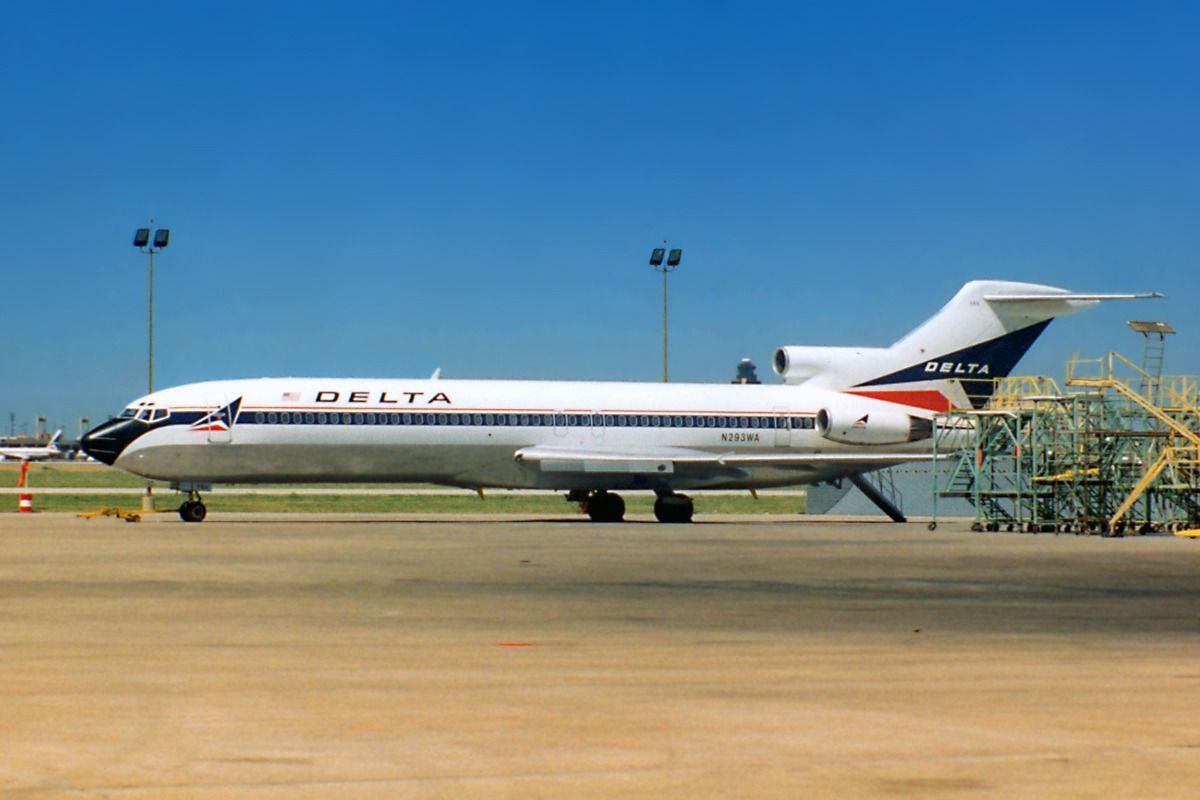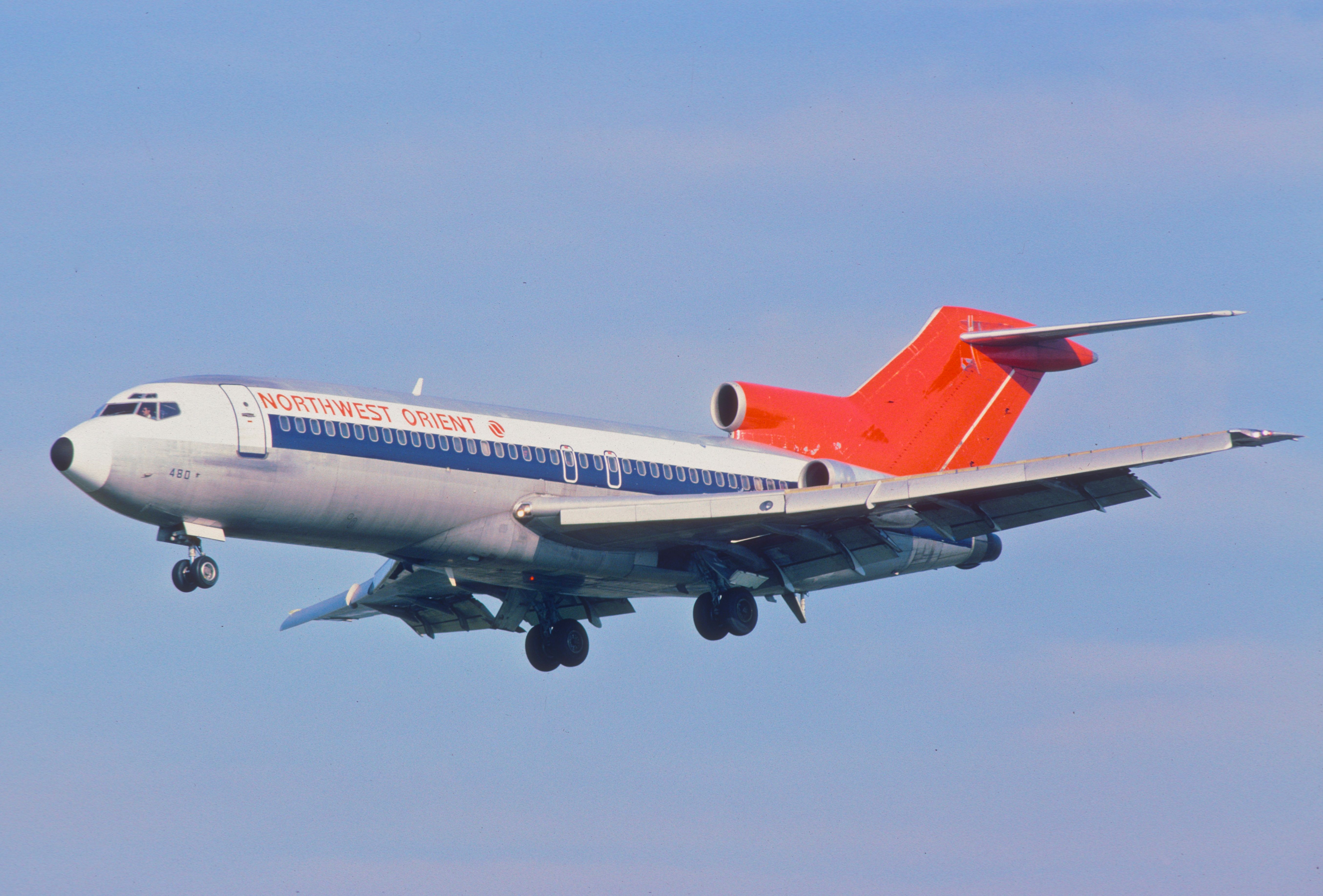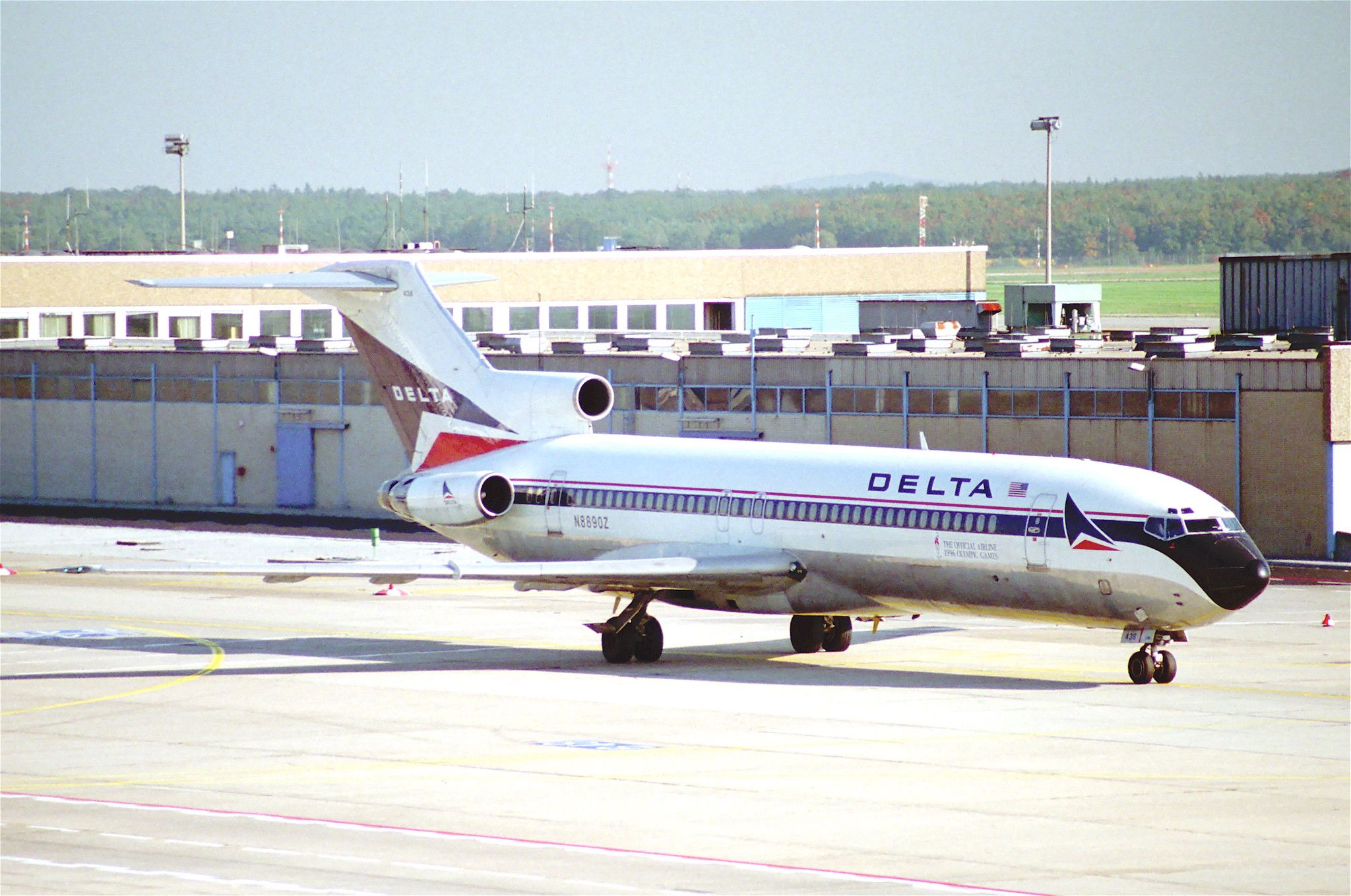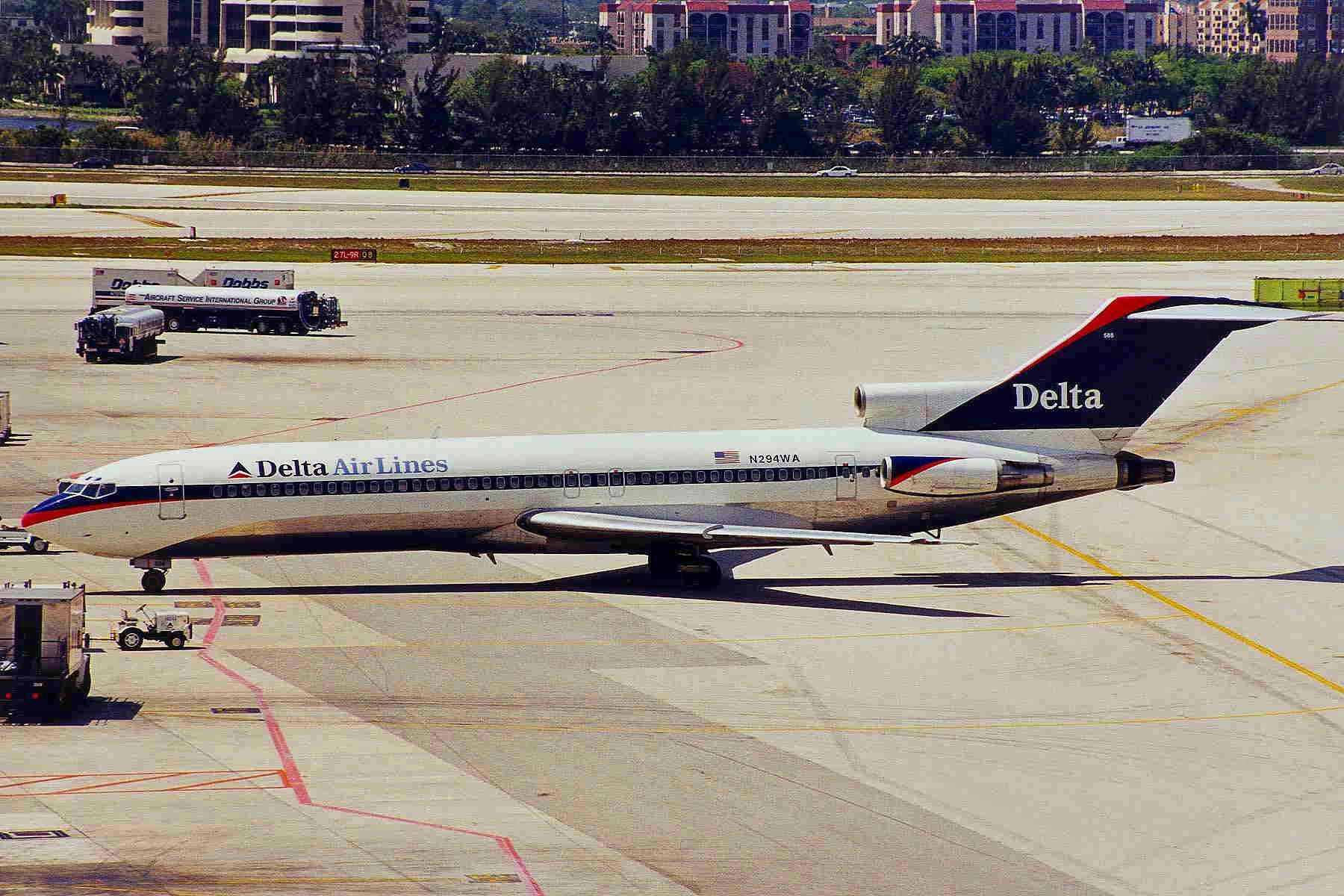Summary
- Boeing's 727 was not part of Delta Air Lines's initial network strategy, but its three-engine design offered a unique value.
- The 727 came with features such as an auxiliary power unit and an airstair, catering to operations from smaller airports.
- Delta became the most prominent 727 operator, with a dynamic passenger experience and high efficiency, flying millions of miles.
The story of Delta Air Lines' relationship with the Boeing 727 originates with the carrier's 1972 merger with Northeast Airlines, a midsize airline based out of Boston Logan International Airport (BOS). Like many other aircraft currently in Delta's fleet, these 727s were not initially part of the airline's long-term network strategy.
Nonetheless, the medium-range trijet could offer Delta significant value with its versatility and three-engine configuration. Today, an aircraft with more than two engines would be considered inferior due to lower fuel efficiency. As it happened, though, this was not the case back in the 1970s due to restrictions on the capabilities of twinjets.
Unlike what Delta did with the 747s inherited initially with the 747-100 and later with the 747-400s from Northwest, the jets were not all retired relatively quickly. In this article, we will take a deeper look at the fascinating history behind Delta's operations of the Boeing 727.
A brief overview
Before we talk about the special relationship Atlanta-based carrier Delta Air Lines had with the Boeing 727, let's first take a closer look at the plane and see how it came to be. In the late 1950s and early 1960s, America's three biggest airlines, United Airlines, Eastern Airlines, and American Airlines, were looking for a jet to operate out of airports with short runways, according to AviationSource News.

Why Was The Boeing 727 Discontinued?
US airlines wanted a plane they could fly from airports with shorter runways, and smaller than a Boeing 707.United Airlines asked Boeing to build a four-engine plane suitable for operations from its high-altitude hub at Denver Stapleton International Airport, an airport that would later close in favor of the modern Denver International Airport (DEN). Meanwhile, American Airlines was already flying Boeing 707s and wanted a twin-engine jet to service smaller cities.
Eastern Airlines, which operated many flights to islands in the Caribbean, wanted a three-engine plane to comply with ETOPS requirements. At the time, twin-engine jets were limited to flying no more than 60 minutes from a suitable airport for landing in an emergency.
While Eastern could have operated larger trijets like the McDonnell Douglas DC-10, there were challenges with operating such high-capacity aircraft over medium-range distances, as demand might lead to lower load factors. Furthermore, these larger aircraft might not have been able to land at smaller destinations in the Caribbean.
Want answers to more key questions in aviation? Check out the rest of our guides here.
While each firm had different requirements for Boeing's new jet, all three major carriers eventually agreed on the three-engine Boeing 727. In total, 1,832 examples of the type rolled off the manufacturer's assembly during a 22-year production run between 1962 and 1984.
The Boeing 727 had some unique features
Knowing that the plane would operate from smaller airports with fewer facilities, Boeing developed some unique features. The Boeing 727 had its own auxiliary power unit (APU). This meant the plane could run the air-conditioning and start its engines without needing an external power supply.
To make passenger loading and unloading more manageable, the 727 had its own airstairs that opened from the rear underbelly of the fuselage, according to The Museum of Flight. For this reason, the hijacker D. B. Cooper selected the 727 for his getaway plane, knowing he could open the rear stairs mid-flight and parachute from the aircraft. Another unique feature of the Boeing 727 was optional brakes on the nose landing gear to help the plane stop quicker on small runways.

52 Years Ago D.B. Cooper Hijacked And Escaped A Boeing 727
The Boeing 727 was hijacked while en route to Seattle by a mysterious passenger who has yet to be identified.For airlines, the Boeing 727 eventually proved to be quite the Jack-of-all-trades aircraft, so it was deployed on an impressive array of routes. Some airlines grew to rely heavily on the 727 for their medium-range operations to lower-demand facilities.
Eastern Airlines was the launch customer
The first Boeing 727 entered service with Eastern Airlines on February 1st, 1964, and was immediately deployed on the Miami, Washington DC, Philadelphia route. Delta Air Lines did not get its first Boeing 727 until the carrier merged with Northeast Airlines on August 1st, 1972.
Boeing's 727 offered Delta several advantages over the previous generation of aircraft, which were far less fuel-efficient. Upon arrival, Delta could quickly slate the Convair 880 and many DC-8 models for retirement. The airline grew to rely on the aircraft, eventually purchasing many jets on its own, expanding its fleet following a merger with Western Airlines in 1987, and finally acquiring 727s from Eastern Airlines.
The jet also distinguished itself with a dynamic passenger experience. When speaking at the time about the Boeing 727 joining Delta's fleet, the Delta Air Lines flight museum quotes Delta Vice President for Engineering Julian May as saying the following:
"The 727 has had a place in the Delta fleet for many years. It is popular with our passengers, and its modern, low-noise, and fuel-efficient engines help us keep ticket prices down while being a good neighbor at the airports we serve."
By 1981, Delta Air Lines had 129 Boeing 727-200s in its fleet, making it the world's largest operator of the hugely popular midsize aircraft. Delta's 727s carried 65,000 passengers and 600 tons of cargo while flying 426,000 miles daily. In a typical year, Delta Boeing 727s were flying 1,420,000 miles.
With the plane's original 131-seat configuration, Delta could increase its capacity to New York's LaGuardia Airport (LGA) and what was called Washington National Airport (DCA) at the time. Both airports were closed to four-engined planes like the 707, making the 727 trijet the perfect option.
Delta was the last big US airline still flying the Boeing 727
Eventually, other airlines started opting for the Boeing 737 and the larger Boeing 757, leaving Delta as the last operator of the Boeing 727. The aircraft's last commercial flight by a US carrier occurred on Sunday, April 6th, 2003, when a Delta 727 flew from Hartsfield-Jackson Atlanta International Airport (ATL) to Piedmont Triad International Airport in Greensboro, North Carolina.


.jpg)
.jpg)

.jpg)
